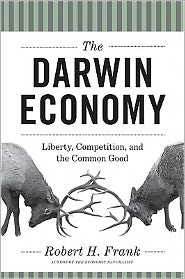
She applied the “Page 99 Test” to her new book, Faith and Money: How Religion Contributes to Wealth and Poverty, and reported the following:
Page 99 of Faith and Money represents the book remarkably well.Learn more about Faith and Money at the Cambridge University Press website, and visit Lisa A. Keister's Duke University webpage.
In this book, I ask: how are religion and personal wealth accumulation related? To answer the question, I analyze several data sets and provide detailed empirical evidence that there is a very strong association among religion, saving, and wealth.
There are two broad reasons that religion and wealth are related. First, religion affects wealth indirectly through its effect on education, marriage, family size, and women’s decisions to work or stay home with their kids. Second, religion affects wealth directly by influencing orientations toward work and money which are evident in approaches taken by people of different faiths toward jobs and careers, saving, giving, and accumulation.
For example, Conservative Protestants tend to have relatively low educations, large families, and traditional family structures (women stay home, men work). Conservative Protestants also tend to believe (and report in my survey data) that money belongs to God, and people are managers of the money. It follows that asking for God’s guidance in making financial decision makes sense. It also follows that accumulating large amounts of personal savings may not be the best use of the money.
Consistent with these patterns, Conservative Protestants are more likely than other groups to accumulate few assets during their lives. For those who do accumulate wealth, Conservative Protestants tend to follow a somewhat traditional wealth accumulation trajectory involving early ownership of cash accounts followed by eventual homeownership. They are unlikely to follow a path that involves early ownership of high-risk financial assets.
Table 99 includes a table that summarizes the wealth accumulation trajectories of Conservative Protestants and the other religious groups that are the focus on the book. The remainder of the book explains why these patterns are so clear.
Naturally, these relationships and processes are much more nuanced than a single table can summarize; there are variations within each religious group, and patterns are constantly changing. However, my results suggest that the relationship between religion and wealth is very strong and underscore the importance of personal beliefs in shaping social and economic inequality.
--Marshal Zeringue


























